Free-to-attend Technology Presentation Stage
Day 2 - Thursday, August 28
Driving Automotive Innovation: Validating Zonal Architectures with 10BASE-T1S
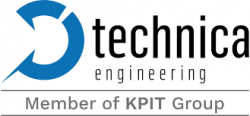 Tao Jin
Tao JinTechnical sales Manager for Asia region
Technica Engineering GmbH
China
As automotive networks evolve toward zonal architectures, engineers face new challenges in testing and validation. This session explores how 10BASE-T1S—a multi-drop Ethernet standard—enables scalable, deterministic communication at the edge of the vehicle. Attendees will learn how to adapt their validation workflows. Real-world examples will showcase how Technica Engineering’s tools are used to simulate and validate 10BASE-T1S networks in lighting, sensor, and actuator domains. Whether you're designing next-gen E/E systems or optimizing test setups, this session offers actionable insights to future-proof your engineering strategy.
What the audience will learn
- The Role of 10BASE-T1S in Modern Vehicle Networks
- How to Adapt Testing and Validation for 10BASE-T1S
- Real-World Use Cases and Deployment Insights
NGI and a new era of intelligent electric vehicle testing
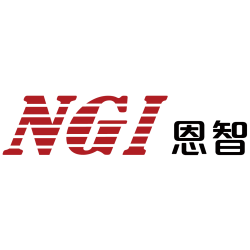 Qingquan Jiang
Qingquan JiangSenior product manager
Next Generation Instrumental (Shanghai) T&C Tech Co. Ltd
China
This presentation will explore NGI's technological innovations in intelligent electric vehicle testing. It will begin with an introduction to NGI's professional background and core capabilities in automotive electronics testing and control, before analyzing the key challenges in testing intelligent electric vehicles, focusing on NGI's innovative testing solutions.
What the audience will learn
- The core testing challenges and industry standards for electric vehicles: the industry standards for key testing areas such as ECU and BMS
- NGI's innovative testing solutions: how NGI enables efficient testing across the entire intelligent electric vehicle industry chain
- The practical implementation and cost-effectiveness of NGI's testing technologies: the technology path through application scenarios
Full dimensional simulation testing of end-to-end NOA systems
 Bo Yang
Bo YangTechnical director
IAE Suzhou Technologies Co. Ltd
China
For the end-to-end NOA systems in autonomous driving, performance validation and reliability assurance constitute critical prerequisites for achieving large-scale deployment. Serving as the strategic cornerstone of validation architecture, simulation testing not only continuously empowers technological evolution, but also establishes systematic verification infrastructure for the emerging 'enhanced perception, streamlined mapping' algorithmic paradigm. High-fidelity sensor simulation modeling, comprehensive digital twin reconstruction, multidimensional scenario libraries and a full-chain verification framework constitute four foundational pillars of end-to-end simulation testing, delivering full lifecycle assurance for NOA systems' functional safety and safety of the intended functionality (SOTIF).
What the audience will learn
- Sensor simulation
- High-fidelity simulation scenarios
- Closed-loop NOA simulation testing
In-car acoustic measurement with innovative HBK solutions
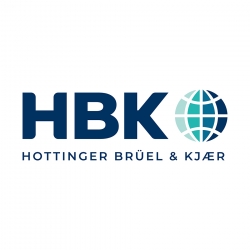 Dr Yan Wang
Dr Yan WangSales solution specialist
Hottinger Brüel & Kjær Co. Ltd
China
The presentation will introduce a locally developed 8-channel STQ system for interiors multipoints background noise reproduction applications; a new in-car acoustic measurement solution with Dirac 7; and Fusion-LN and HBK accelerometers.
What the audience will learn
- A new 8-channel STQ system developed by the local CTC team and its application scenarios
- A new in-car acoustic measurement solution with Dirac 7.0, tested and verified by the local team
- A new product – Fusion-LN, HBK logo accelerometer, etc.
An integrated cloud edge device OTA HIL test system developed based on ISO 24089 and GB 44496 standards
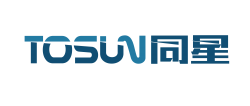 Xiaolin Wu
Xiaolin WuTest development team
Shanghai Tosun Technology
China
This test system simulates an OTA cloud server to create software upgrade tasks, performing functions such as software package detection, verification and distribution. It uses a signal shield to simulate various network conditions, including strong signal, weak signal and disconnection. In compliance with ISO 24089 and GB 44496 standards, the system invokes the HMI interface to graphically display the OTA workflow. It conducts comprehensive testing, including precondition checks for OTA upgrades, software flashing process testing, performance testing, stress testing, stability testing and failure mode testing.
What the audience will learn
- International and domestic standards introduction
- OTA testing scope
- OTA test system architecture
- OTA HIL testing solution
10BASET1-S network basics and tools
 John Mitchell
John MitchellDirector of business development for China
Intrepid Control Systems
USA
This presentation will provide an overview of the automotive Ethernet 10BASE-T1 network layout, operation and testing.
What the audience will learn
- Background of 10BASE-T1S
- Advantages of 10BASE-T1S
- 10BASE-T1 basics
- Comparison of 10BASE-T1S with other popular automotive networks
- Intrepid Control Systems tools for 10BASE-T1S
New-generation compact emissions analyzer for upcoming regulations and carbon neutrality
 Yosuke Kondo
Yosuke KondoAssistant section leader
Horiba Ltd
Japan
Development of internal combustion engines that utilize alternative fuels to achieve carbon neutrality, and compliance with the upcoming stricter emissions regulations are essential. To contribute to them, Horiba has developed a new-generation compact emissions analyzer, MEXAcube, based on the company's unique Quantum Cascade Laser-Infrared Spectroscopy (QCL-IR) IRLAM. It can measure nine components such as CO2, NO, N2O, NH3 and HCHO under both laboratory and real driving conditions. This presentation introduces an outline of MEXAcube and its measurement performance capability with actual testing results. In addition, Horiba proposes improvement of R&D efficiency and cost-effective solutions.
What the audience will learn
- Advantages relating to the measurement performance of MEXAcube
- MEXAcube's useful new features for emissions testing
Introduction to Moog's automotive steer-by-wire electrical mechanical test system
 Helian Jiang
Helian JiangSenior application engineer
Moog
China
Combined with the application of automobile steering test, this presentation will introduce the structure and performance parameters of Moog's new-generation steer-by-wire electric test system.
What the audience will learn
- Application introduction of steer-by-wire durability testing, performance testing and mHIL testing
- Compared with the test data of traditional hydraulic steering test bench, the advantages and disadvantages are explained
- Introduction to the CAN/CAN FD communication functions and control with steer by wire
DAQ/Telemetry technique in EV/eVTOL powertrain test
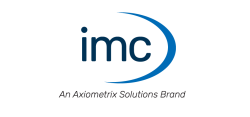 Harry Tan
Harry TanAutomotive segment business development manager
imc Test & Measurement (an Axiometrix Solutions brand)
China
Accurate torque measurement is critical in EV/eVTOL powertrain testing to ensure efficiency, safety, and performance validation. Real torque data reflects true mechanical loads, essential for optimizing electric drives, torque vectoring, and smart chassis control. Challenges include high-speed rotating environments, EMI interference, and complex multi-axis measurements. imcDAQ & wireless telemetry address these pain points with high-precision, isolated sensors, robust data acquisition, and real-time wireless transmission, enabling dynamic testing under extreme conditions. Applications span EV powertrain durability, torque vectoring validation, smart chassis feedback control, and eVTOL propulsion system testing, ensuring reliability in electrified mobility.
What the audience will learn
- Critical torque measurement for EV/eVTOL performance validation
- Overcoming high-speed rotation and EMI testing challenges
- Wireless telemetry benefits for real-time dynamic testing
- EV smart chassis & eVTOL propulsion test solutions
- DAQ/Telemetry measuring challenges in vehicle/bench test
Coordinated advancement of powertrain and intelligent chassis NVH and reliability
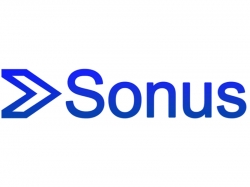 Liyong Zeng
Liyong ZengSales Director
Sonus Hong Kong Limited
Hong Kong, China
Electrification is reshaping the architecture of automobiles. In particular, the collective evolution of NEV powertrain and intelligent chassis is at the forefront of intelligent transformation.
While new chassis technologies such as brake- and steer-by-wire, and active suspension are gaining attention, automakers’ pursuit of high torque and dynamics in chassis-powertrain integration is facing tough challenges. As the EMB system sustains control through direct commands to motors, its reliability and NVH becomes the focus of development.
Our presentation will explore the challenges faced in the R&D and production stages of chassis-powertrains and the role of NVH in enhancing product reliability and quality.
What the audience will learn
- R&D and Production Challenges of Powertrains and Intelligent Chassis
- Reliability and Quality
- NVH Technology